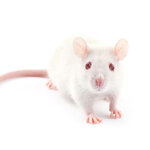Cancer Research

In the 1980s, as tanning beds became a craze, melanoma rates began to climb. Since cancer often takes time to develop deaths due to melanoma peaked in 2013 but thanks to immunotherapy, less risky behavior, and earlier detection, rates dropped 18 percent within three years after.
This is a fantastic public health victory. People still die, but that is from metastatic melanoma, the aggressive form that spreads from the skin to other organs, such as the lung, liver, or brain.
Despite what you read when activist groups create some new war on food or chemicals, cancer prostate to breast to lung,…

Results from the Behavioral Risk Factor Surveillance System (BRFSS), using data collected from annual questionnaires from 2014 to 2018, finds that rates of skin cancer were higher among gay and bisexual men compared to heterosexual men but lower among bisexual women than heterosexual women.
The authors of the paper argue that is a reason to
ask about sexual orientation and gender identity in national health surveys. The Centers for Disease Control (CDC) uses the BRFSS to collect information about risk factors and behaviors among adults. About 450,000 adults are interviewed by…

A high body mass index (BMI), a measure of weight relative to height, has been linked to cancer, diabetes, and cardiovascular diseases, and that has led to guidelines based on low BMI, despite it being a population-level statistical correlation with little individual clinical relevance. A large weightlifter may not be unhealthy while a thin person with a terrible diet is no role model.
A new study in JAMA Oncology increases confusion about what BMI does and does not tell us because it finds a statistical correlation between high BMI and cancer outcomes. In clinical trials of…

Blocking a key regulator of the immune system helps unleash the body's natural defenses against several forms of cancer, a discovery which opened up a new era of cancer immunotherapy.
Now researchers have flipped this script and found that, when impaired, a molecularly similar regulator can cause the damaging immune system attacks on skin and organs that are the hallmark of the autoimmune disease lupus. Though still just in the exploratory stage, mice are not little people so this does not translate to humans, the work suggests a way to restore function of this inhibitor which could one…

For the first time in the United States, a gene editing tool has been used to treat advanced cancer in three patients and showed promising early results in a pilot phase 1 clinical trial. So far the treatment appears safe, and more results are expected soon.
To develop a safer and more effective treatment for cancer patients, scientists from the University of Pennsylvania, the Parker Institute for Cancer Immunotherapy in San Francisco and Tmunity Therapeutics, a biotech company in Philadelphia, developed an advanced version of immunotherapy. In this treatment, a patient’s own immune cells are…

There are 15 million people living with cancer in just the United States and it is painful. The huge downside to CDC claiming that recreational fentanyl use is an opioid epidemic is that they have stigmatized legitimate pain patients and their care - and so cancer patients end up in Emergency Rooms suffering from pain, nausea, and shortness of breath.
A recent analysis involved 1,075 patients at 18 emergency departments associated with cancer centers in the U.S. The majority had received cancer treatment in the preceding 30 days and more than half had advanced or metastatic disease.…

When it comes to getting treatment for cancer treatment, your marital status could be making a significant difference in the level of medical care you get, finds a new analysis.
The stakes are high, given that 45 percent (111 million) U.S. adults are unmarried and given the demographic trend among young people that number is likely to rise.
University of Delaware professor emerita of English Joan DelFattore became interested in this notion because of her personal experience as an unmarried patient so she examined 84 medical articles based on a National Cancer Institute database to show that…

Two statistical analyses looked at common disease incidence, hospitalization and death, plus modifiable cardiovascular risk factors in middle-aged adults across 21 High-Income, Middle-Income, and Low-Income Countries and found that cancer is now the leading cause of death in wealthier countries.
That's a good thing. It means cardiovascular deaths are in decline, which means greater longevity. The number one risk factor for cancer is instead age.
The Prospective Urban and Rural Epidemiologic (PURE) study is the only large prospective international cohort study that involves substantial data…

A CRISPR gene editing system inside a nanogel delivery system injected into the body could put a stop to the growth of triple-negative breast cancer and it's gone past the first hurdle; human tumor cells and mice.
Triple-negative breast cancer has the highest mortality rate of all breast cancers. Lacking estrogen, progesterone and HER2 receptors, it accounts for 12 percent of all breast cancers. It occurs more frequently in women under age 50, in African American women, and in women carrying a BRCA1 gene mutation.
Currently, surgery, chemotherapy, and radiotherapy are the best treatment…

A new scaremongering story about food and cancer is making the rounds but before you run off to find comfort in the arms of Mark Hyman, Mehmet Oz, or Joe Mercola, keep one thing in mind.
This is in mice. This stuff is always in mice or a statistical correlation, which means without real science showing it in humans, it is not relevant to humans.
Mice are not little people, so while mouse studies can exclude effects from being possible in humans, they can never show it. That is why FDA requires humans trials before something is allowed on the market, while groups that don't use science, like…